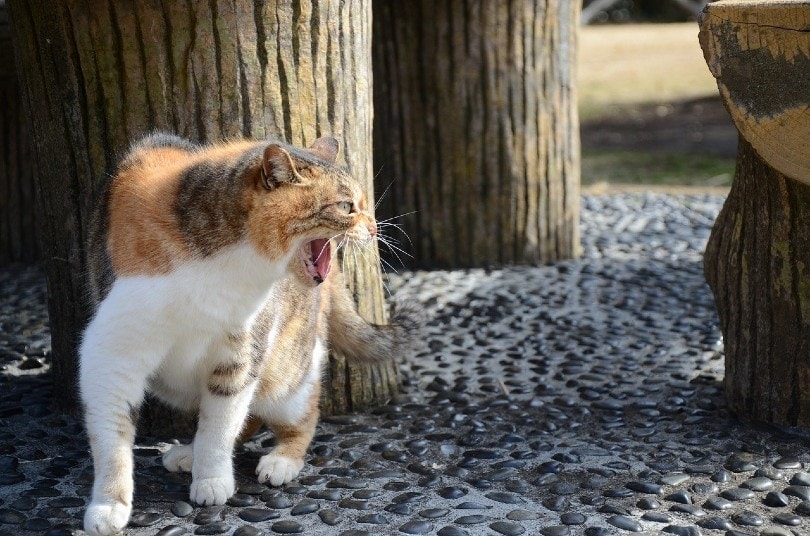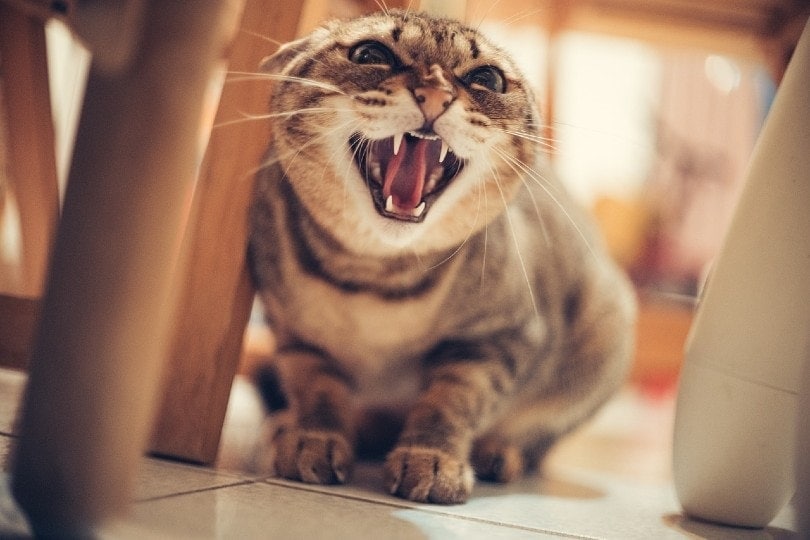How to Tell Which Cat Is Dominant? Signs & Concerns
By Ashley Bates
Updated on

If you own a couple of cats, you might notice one of them is a little sassier or bossier than the other. Other times, it might not seem very clear who’s in charge since they go back and forth with power trips. A natural order is a very normal part of the circle of life, but it’s sometimes hard to keep up with.
Even if your cats get along, you might be curious which one rules the roost. If you can’t decide on the power dynamic, let’s explain how dominance works in cats so you can pick up on the signs.
What Is Dominance?
Dominance is a power factor some cats assert over others. Many factors play into how dominant a dynamic is between a pair or group of cats. Some cats can be highly territorial, possessive, and jealous. Others have an influx of hormones that leads to needing to dominate instinctually.
Dominance is used in the wild to create an order within the group. The more dominant of the group will rule while more passive individuals take on other roles.

Do All Cats Fight for Dominance?
Not all cat pairs or groups are interested in dominance, but you will likely notice a dynamic shift in the house. Each one has their role and soon other cats follow suit, accepting the way things are.
Also, it’s important to understand the difference between play fighting and an actual problem. Many cats can play questionably rough sometimes.
What Influences Dominance in Cats?
Dominance is prevalent among same-sex pairs, though it can happen with a male and female. Several factors can influence dominance in cats, but the biggest is a conflict of personality. Some are just more driven while others are more passive, just like people.
Socialization is critical for kittens, which is why it’s crucial to wait until kittens are at least 8 weeks old before separation from the mother and litter occurs.

The 7 Signs of Dominance in Cats
It might seem pretty self-explanatory, but there are definite signs to look for when your cat is strutting their stuff and trying to intimidate the ranks.
1. Hissing
Hissing is an obvious sign that your cat just isn’t having it. If you find them hissing any time they meet the face of another feline, they might be saying, “Get out of here. This space is mine.”
2. Hitting
If your cat is fed up enough, they might swat and offer lots of unpleasant vocalizations to show their disapproval. Hitting is usually not an issue, just as long as the challenged cat backs down.
3. Growling
Growling is a very distinct noise and cats can make some pretty wicked vocalizations when they are upset.

4. Controlling Food
Some cats bully others by not allowing them access to the food bowl. They will hiss and growl, and sometimes even sit in the food bowl.
5. Spraying
If your cats are trying to ward the others off and they aren’t altered, they could spray to mark their spots. Spraying is highly pungent and very hard to get out of fabrics, so it’s best to stop this dead in its tracks.
6. Bunting
Bunting is a way of marking. It’s usually done out of affection, but sometimes it can be a warning. They might mark the other with their scent to say, “Sorry, I’m the boss here.” This is definitely a more passive form of dominance assertion.
7. Change in Ears
When a cat is in a defense position, its ears change location, emitting a low growl. It might end at a standoff, but it could get physical—so keep an eye out.

Severity of Dominance
Your cats will probably get along just fine, except for a few actions showing dominance. Just because one controls the food bowl doesn’t mean they won’t be napping together an hour after.
Having a dominant cat is typical in groups and pairs. It’s usually not a problem with cats who have been spayed or neutered.
When Is Dominance a Problem?
Dominance is often an issue as soon as it turns into aggression or leads to more significant issues. Kitties can be downright ruthless when they are irritated, feel territorial, or feel threatened.
If you notice a lot of spats going on between your cats, an injury could be likely. So to keep them completely safe, it’s best to avoid letting the issue escalate into aggression or poor behavior.

1. Spraying or Marking
Both males and females use spraying and marking to attract mates or assert dominance. You might notice a power struggle happening, particularly common in unaltered cats.
- Once spraying starts, there is no guarantee it will end once you get your cat fixed, so it’s always recommended to get this surgery before they reach sexual maturity.
- Certain sprays, detergents, and deterrents are available to owners. You can buy from sites like Chewy that remove smells and repel your cats.
2. Using the Bathroom Outside of the Litter Box
If you have a little competition happening in your home, you might notice “accidents” happening more often. When there is a territorial conflict, cats often refuse to go where another cat has done their business.
- One solution to this problem is to offer enough litter boxes to accommodate all cats in the home. The general rule is one litter box per cat—plus one.
3. Injury
If your cats are really hopping aboard the drama train, it could lead to nasty fights. Cats have incredibly sharp teeth, dagger-like claws, and athletic bodies—most can easily hold their own. However, they can get infections or injuries from fights like this.
Not only does this harm your cats, but it also racks up vet bills. If you’re getting to the point that you have to mend wounds, something has to give.
- If one or both cats are unaltered, you might want to opt for the surgeries as soon as possible. Reducing the hormones associated with dominance can lessen a bit of that aggression.
- However, if your cats just don’t get along, you might have to separate them permanently or even consider behavioral training.
Conclusion
It may be easy to tell who is the boss around your home. But some cats might have a little battle royale for the power going on. As long as no negative behaviors are happening, it really doesn’t matter who’s at the top.
If your cats are behaving poorly or spraying in the home, you might need to search for solutions to the issue. Don’t hesitate to speak to your vet for professional guidance and advice.
See also:
- Does My Cat Have an Alpha Human? The Fascinating Answer!
- How to Stop My Cat from Bullying My Other Cat: Vet-Approved Solutions
Featured Image Credit: isakarakus, Pixabay













